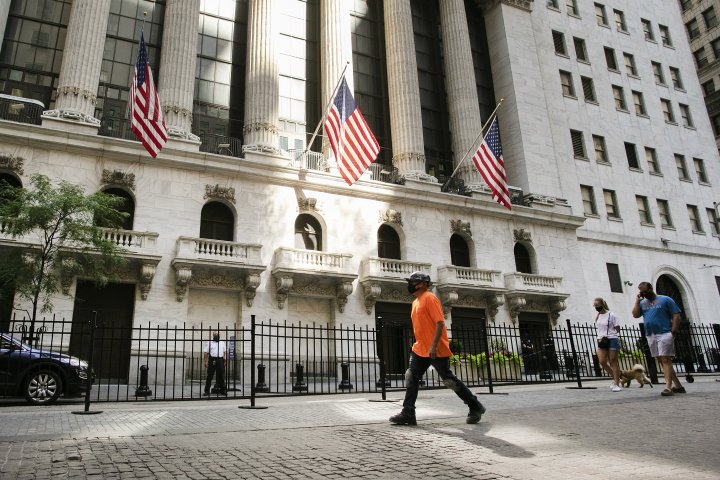[ad_1]

While deaths from the coronavirus in the U.S. are mounting rapidly, public health experts are seeing a flicker of good news: The second surge of confirmed cases appears to be leveling off.
Scientists aren’t celebrating by any means, warning that the trend is driven by four big, hard-hit places — Arizona, California, Florida and Texas — and that cases are rising in close to 30 states in all, with the outbreak’s center of gravity seemingly shifting from the Sun Belt toward the Midwest.
Some experts wonder whether the apparent caseload improvements will endure. Nor is it clear when deaths start coming down. COVID-19 deaths do not move in perfect lockstep with the infection curve, for the simple reason that it can take weeks to get sick and die from the virus.
The future? “I think it’s very difficult to predict,” said Dr. Anthony Fauci, the government’s foremost infectious-disease expert.
The virus has claimed over 150,000 lives in the U.S., by far the highest death toll in the world, plus more than a half-million others around the globe.
Over the past week, the average number of deaths per day in the U.S. has climbed more than 25 per cent, from 843 to 1,057. Florida on Thursday reported 253 more deaths, setting its third straight single-day record. The number of confirmed infections nationwide has topped 4.4 million.
Based on a seven-day rolling average, daily cases of the coronavirus in the U.S. fell from 67,317 on July 22 to 65,266 on Wednesday, according to data kept by Johns Hopkins University. That is a decline of about three per cent.
Researchers prefer to see two weeks of data pointing in the same direction to say whether a trend is genuine. “But I think it is real, yes,” said Ira Longini, a University of Florida biostatistician who has been tracking the coronavirus and has been a source of disease forecasts used by the government.
The trends in Arizona, Texas and Florida are “starting to bend the curve a bit,” said Jennifer Nuzzo, a Johns Hopkins public health researcher. Those states, along with California, have been pouring large numbers of cases each day into the national tally. So when those places make progress, the whole country looks better, she said.
Also, in another possible glimmer of hope, the percentage of tests that are coming back positive for the virus across the U.S. dropped from an average of 8.5 per cent to 7.8 per cent over the past week.
But with the outbreak heating up in the Midwest, Democratic Gov. Tony Evers ordered the wearing of masks statewide because of a spike in cases, joining some 30 other states that have taken such measures.
The latest surge in cases became evident in June, weeks after states began reopening following a deadly explosion of cases in and around New York City in the early spring. Daily case counts rose to 70,000 or more earlier this month. Deaths, too, began to climb sharply, after a lag of a few weeks.
[ad_2]
Source link
Dear readers, we really need your support to keep on serving you with authoritative, truthful, and juicy stories everyday. For your support, please reach out to the editor @gavelinternational66@gmail.com

